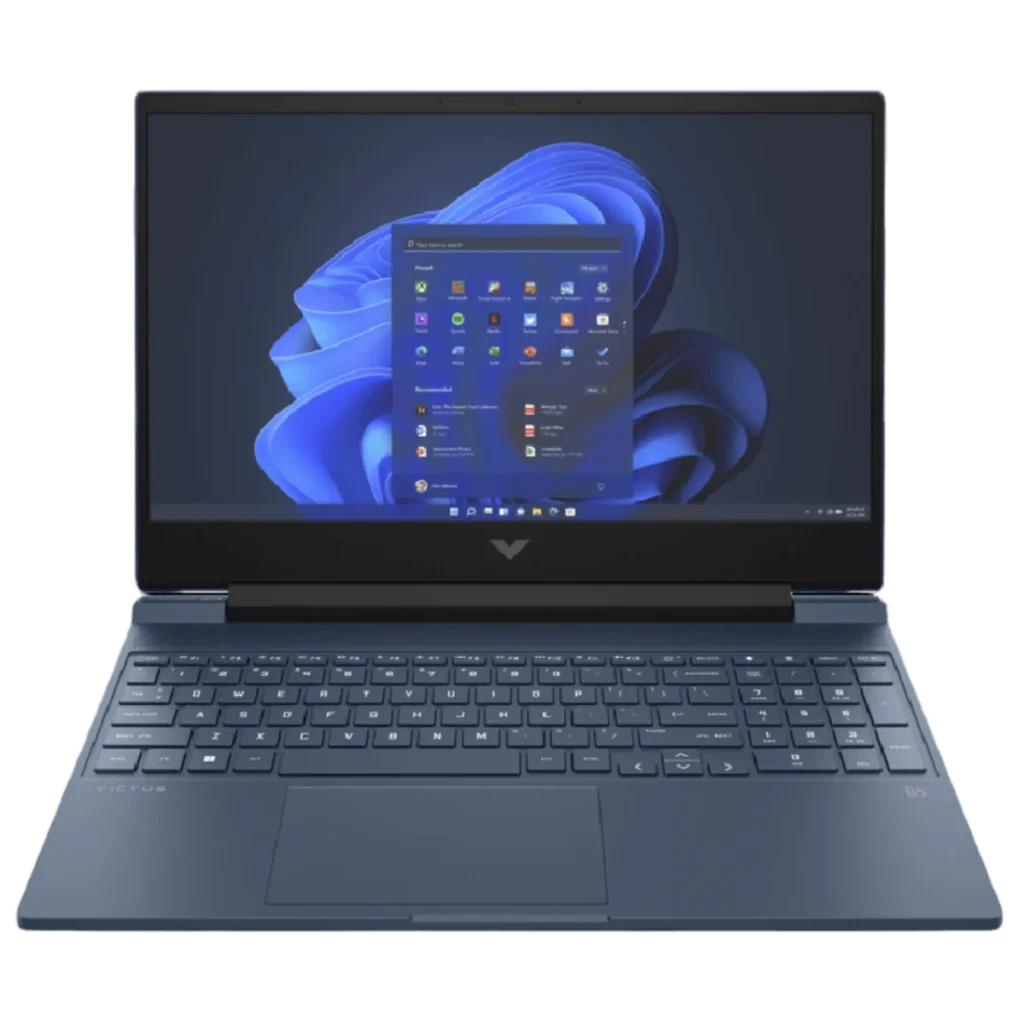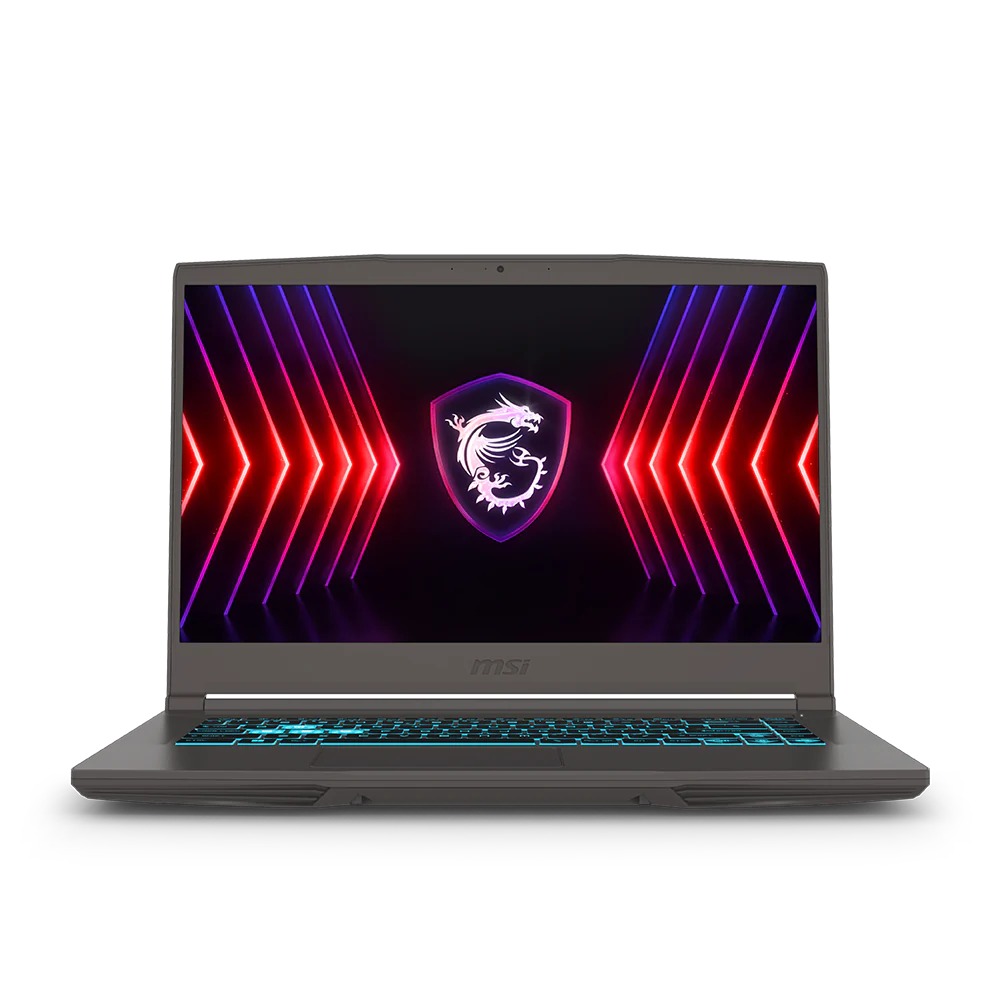A gaming laptop fits PC graphics capabilities into a small, portable form factor, making it ideal for traveling, using on the sofa, or just taking up less desk space. With displays that range from 14 to 18 inches and graphics cards that can manage a range of resolutions, the market is flooded with possibilities for every budget, from entry-level to fully equipped, multi-thousand dollar setups. High refresh rate displays, opulent RGB lighting, and sometimes even mechanical keyboards are features found in the finest gaming laptops.
Additionally, integrated graphics in gaming handhelds are enjoying a resurgence, which may encourage some businesses to explore the possibilities of developing systems without separate GPUs entirely. This implies that a number of updated gaming laptops for on-the-go gaming should be available over the next months.
Table of Contents
- No 1 HP Victus 15
- No 2 ASUS ROG Strix G16
- No 3 MSI Thin 15
Top 3 Best Budget Gaming Laptop In 2025
No 1 HP Victus 15

The HP Victus 15, is created solely for the price-savvy buyer in mind. And even the lowest priced version can play high-end titles well while still balancing most other tasks that the user may need.
We wouldn’t suggest investing in this laptop if you need something with a long battery life or a flashier appearance, but given its excellent price, this is definitely one you’ll want to consider. If you need an exterior that’s made of sturdy material and has a solid weight, then the HP Victus 15 is definitely up your alley.
At five pounds, it has some heft to it which is great since it can take quite a beating, but it can also be a downside when you need to carry it around. In terms of gaming performance, this is a budget laptop and as such there are certain concessions to be made when dealing with lower specs.
For instance, the NVIDIA GeForce GTX 1650 Laptop GPU that the lowest spec HP Victus 15 laptops are outfitted with only comes with 4GB VRAM.
Pros
- Excellent price
- Good gaming performance
- Can double as a work laptop
Cons
- Bad battery life
- Rather plain design
No 2 ASUS ROG Strix G16

The Strix G16 boasts a 16-inch QHD+ ROG Nebula 240Hz anti-glare display with Dolby Vision HDR support and Pantone Validation. It features the latest Intel i9 14th Gen 14900HX processor and NVIDIA RTX 4070 GPU for top-notch performance.
The laptop’s design is inspired by athletics, giving it a bold and vivid appearance. It comes with a professional esports-quality keyboard and Aura Sync accents. The Strix G16 operates cool and quiet thanks to ROG Intelligent Cooling Ecosystem. It supports Wi-Fi 6E, Bluetooth v5.3, Dolby Atmos, and AI noise-canceling technology. The laptop has a 90WHrs battery with a 280W adapter and runs on Windows 11 Pro.
The refreshed ASUS TUF Gaming A15 features a 15.6-inch FHD 144Hz anti-glare display with sRGB:100% support. It is equipped with up to the latest AMD Ryzen R9 8495H Processor and NVIDIA RTX 4070 graphics for excellent gaming performance.
The G-Sync enabled panel ensures smooth gameplay. The machine features Arc Flow Fans for improved airflow and cooling performance. It also has a MUX Switch with NVIDIA Advanced Optimus support for reduced latency and increased performance.
Pros
- 240Hz display with fast response time.
- Supports G-SYNC to minimize screen tearing.
- User-replaceable RAM and storage.
- Wide port selection includes Thunderbolt 4 and HDMI 2.1 support.
Cons
- Hot and loud under load.
No 3 MSI Thin 15

The MSI 15 is a household name in the world of gaming and their gaming laptop portfolio is quite well known. At the lower-end of this portfolio is their Thin-series of gaming laptops, and we are reviewing of Thin A15 B7V.
Featuring an AMD Ryzen 7000-series processor and NVIDIA RTX 40-series GPU, the MSI Thin A15 promises good performance without an absurd price tag. What are the compromises that MSI has made to achieve this performance? Read in my review to find out.
The chassis is made out of plastic entirely, and the quality is fine. There is a decent amount of chassis flex for the keyboard deck and the lid, but it is nothing problematic. For its price-range, the laptop is fairly thin, measuring 21.7mm and it weighs 1.86Kgs.
The hinge is not as tight as I would have liked, and opening the lid with one-finger is just barely possible. If I had to pick an issue with the laptop’s design, it would certainly be the bezels. For a laptop released in 2024, the top and bottom bezels are too large and makes the laptop look quite dated.
Pros
- Competitive price
Weight and size
Acceptable gaming options
Cons
- Corners cut with connectivity
Small hard-drive
What’s the most important gaming laptop component?
The graphics card is the apparent solution when it comes to gaming, but things have lately become a bit more difficult. Because GPU performance is now so reliant on cooling, you need to be aware of the maximum power a graphics card can use and the chassis it fits inside.
An RTX 4080 housed in an 18 mm chassis would operate much more slowly than one in a much chunkier box with space for better cooling, as we said at the top.
Should I worry about what the CPU in a gaming laptop is?
That really depends on what you want to do with your laptop. Although an AMD Ryzen CPU with 8 cores and 16 threads will enable you to be quite productive while on the go, it will not be very useful for gaming. When combined with a graphics card like as the RTX 4070, the CPU will be more than capable of providing top-tier gaming performance as long as it has at least six cores and twelve threads and is clocked high enough.
What screen size is best for a gaming laptop?
Perhaps the biggest direct influence on your build selection will come from here. The size of your laptop is mostly determined by the screen size you choose. While a 17-inch display almost ensures workstation equipment, a 13-inch computer will be a tiny and light ultrabook. This is the most popular size for gaming laptop screens, and it is 15 inches.
Are high refresh rate panels worth it for laptops?
We love high refresh rate screens here, and while you cannot guarantee your RTX 4060 will deliver 300 fps in the latest games, you’ll still see a benefit in general look and feel running a 300 Hz display.
Should I get a 4K screen in my laptop?
Nah. 4K gaming laptops are overkill; they’re fine for video editing if you’re dealing with 4K content, but it’s not the optimal choice for games. The standard 1080p resolution means that the generally slower mobile GPUs are all but guaranteed high frame rates, while companies are slowly drip-feeding 1440p panels into their laptop ranges.
A 1440p screen offers the perfect compromise between high resolution and decent gaming performance. At the same time, a 4K notebook will overstress your GPU and tax your eyeballs as you squint at your 15-inch display.
Please be aware that we may receive a commission if you buy something after clicking on the links in our stories. This helps to fund our work. Thank you for your support and attention. Feel free to look around further to find out more about how these commissions support our work. Top Great Reviews

